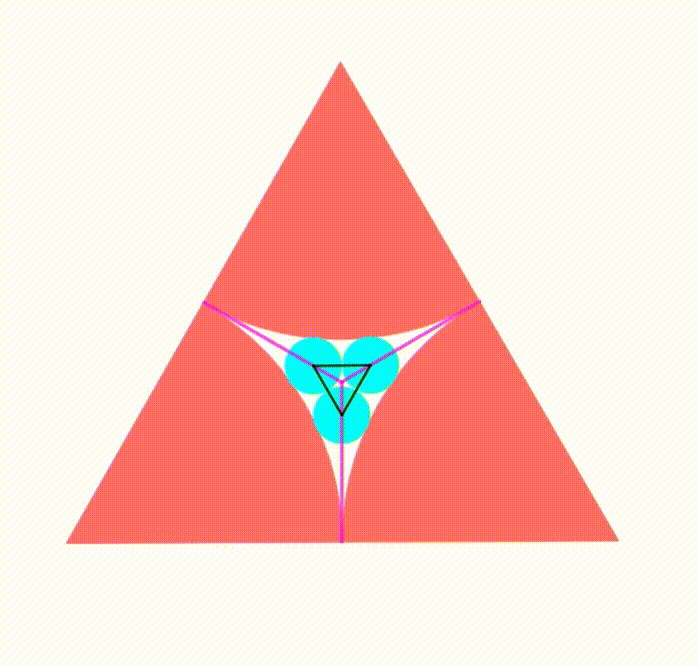Dynamic Geometry: P36
 The diagram shows an equilateral triangle with side length
cut into
equal circular sectors. The remaining white space in the middle is used to inscribde
cyan congruent circles moving freely so they meet in the middle. We use each center to draw a black equilateral triangle. When the black equilateral triangle is perfectly inscribed into the white space, the radius of one circle can be expressed as
, where
,
and
are positive integers and
is square-free. Find
.
The diagram shows an equilateral triangle with side length
cut into
equal circular sectors. The remaining white space in the middle is used to inscribde
cyan congruent circles moving freely so they meet in the middle. We use each center to draw a black equilateral triangle. When the black equilateral triangle is perfectly inscribed into the white space, the radius of one circle can be expressed as
, where
,
and
are positive integers and
is square-free. Find
.
The answer is 6.
This section requires Javascript.
You are seeing this because something didn't load right. We suggest you, (a) try
refreshing the page, (b) enabling javascript if it is disabled on your browser and,
finally, (c)
loading the
non-javascript version of this page
. We're sorry about the hassle.
Let the black equilateral triangle be inscribed in the white space, and draw △ A B C , as follows:
By the properties of an equilateral triangle, if the sides of the large pink equilateral triangle are 2 , then A C = 3 2 3 .
That makes D C = A C − A D = 3 2 3 − 1 , and C B = 2 ⋅ D C = 2 ( 3 2 3 − 1 )
If the radius of a cyan circle is r , then A B = r + 1 .
By the law of cosines on △ A B C , A B 2 = A C 2 + C B 2 − 2 ⋅ A C ⋅ C B ⋅ cos ∠ A C B , or
( r + 1 ) 2 = ( 3 2 3 ) 2 + ( 2 ( 3 2 3 − 1 ) ) 2 − 2 ⋅ 3 2 3 ⋅ 2 ( 3 2 3 − 1 ) ⋅ 2 1
which solves to r = 2 2 − 3 − 1 .
Therefore, a = 2 , b = 3 , c = 1 , and a + b + c = 6 .